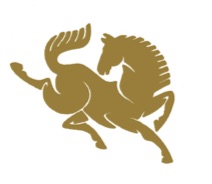So the number one thing I usually hear from riders and their trainers is they can never get their right/left shoulder down. This isn't because they aren't aware of it, often they are obsessed with it and they can never seem to achieve level, no matter how much they work on it. Because the shoulders go unlevel the second thing they say is they have a head tilt, bob, or some other head or neck issue.
These things can be addressed fairly easily through Pilates and creating a new awareness of straight. Often times I need to first determine if this is caused because the horse is crooked, and to get the horse to appear straight we must ride either shoulder fore or shoulder fore with a renver. You see our muscles take on our horses imbalances, just as their muscles can take on ours. We are lucky and challenged in our sport because our language is the the language of muscles and their engagement. No matter what discipline you practice we all speak to our horse, consciously or not, through our muscles. So this then becomes a question of what came first the chicken or the egg? What I find 9 times out of 10 is that the shoulders and neck are actually stemming from an unbalanced and under-engaged pelvis. This can sometimes be very hard to see for the trainer from the ground. Your hips can be slightly unlevel and boom one shoulder will be higher than the other. Our pelvis is Grand Central Station for all the energy we receive and release. If your hips aren't balanced and level your shoulders, neck and head can not be either.
So how do I work this. Well lets take two scenarios. (Please note I am not their to train your horse just you)
1) The horse's pelvis and hind end aren't level and therefore creating the unlevel hips in the rider, and then the shoulders, followed by head and neck issues. From my point of view we need to strengthen the riders pelvic control and awareness. I do this with simple movements in the saddle and then Pilates exercises out of the saddle to help them work towards always finding a balanced neutral pelvis and an engaged pelvic floor. I usually start with what I call active standing, and active sitting. These can be done anywhere and create the awareness, feel, and connection we need to effect the changes we want in our body. The beautiful thing is they can be applied in the saddle as well and when we become connected to the proper feel we are then better able to communicate straightness to our horses.
2) The horse is fairly straight and the riders pelvis is crooked, unlevel, tucked/slanted, or their is scoliosis. Or the pelvis and is ok but they are collapsing in their core and unable to engage their ribs and support from inside, therefore their shoulders try to round and do what their core should be doing.
Ok so believe it or not the exercises are very similar here but more emphasis is put on slowly bringing the rider towards a more neutral, balanced pelvis. I can and do work every day with people who have these pelvic problems. Please be advised I am not a chiropractor, osteopath, or other medical professional that directly diagnosis's and works to fix these. That being said I can help effect the muscles that are creating these imbalances and help them find neutral. I often recommend these riders to these types of professionals to help them progress more effectively. So that being said a lot of riders benefit from active standing, because it puts them back to center and then teaches them how to draw the energy up the midline and through the core, which is exactly what we do as riders.
The collapsed upper body is also addressed with active standing, and sitting. This allows you to be long and lifted through your whole torso training proper posture. To further train proper form, and posture so that it can absorb the stresses put on it in the saddle and stay correct; I also include a the exercise ribcage arms and put together an extension series appropriate for the rider.
Simply recreating this awareness can have a very immediate and tangible effect on your riding and seat. Due to the vast amount of exercises and scenarios that stem from pelvic imbalances I will be doing another blog dedicated to the pelvis and pelvic floor where I will go a little deeper into these imbalances and how we work to clear them.
So in close our shoulders and toros are just often a symptom of a lack of pelvic floor strength and awareness as well as bad posture awareness off the horse. So even thought these imbalances can be caused by things out of our control or maybe better said out of our awareness; through the work in Pilates we instill the riders with core awareness and balance to help them speak more clearly and cleanly with their mounts. When this happens they are better able to work through the exercises they need to progress through their chosen discipline.
